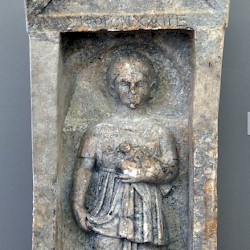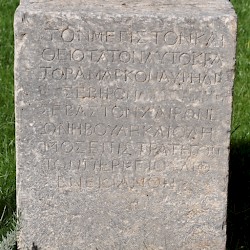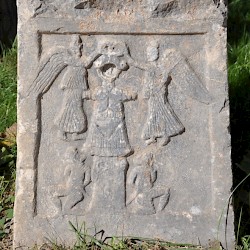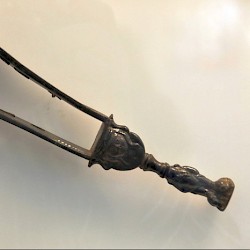Boeotia
Q833648Boeotia (Greek: Βοιωτία): landscape in Central Greece, with several towns and capital Thebes.
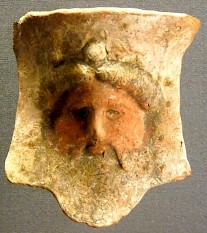
Boeotia is separated from Attica in the east by Mount Parnes, from the Megarid in the southeast by the Cithaeron Mountain range, from the Peloponnese in the south by the Gulf of Corinth, from Phocis in the west by the Helicon and Parnassus mountains, and from the island of Euboea in the north by a channel known as Euripos. Because nearly all roads from northern to southern Greece lead through Boeotia, it has great strategic importance. The central plain – which is not really flat – was nicknamed “the dancefloor of Ares”.note In the western part of this place was Lake Copais, which was drained in the nineteenth century. The plain was known for its excellent wheat.note
Boeotia has been inhabited since times immemorial, with some very ancient inhabitation near Lake Copais. Several mythological story, recorded much later, are situated in this distant past, including the story of Cadmus, the mythological founder of Boeotia's main city, Thebes.
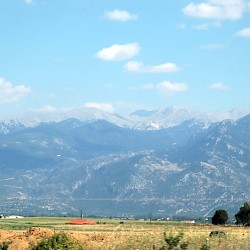 The Parnassus Mountain range |
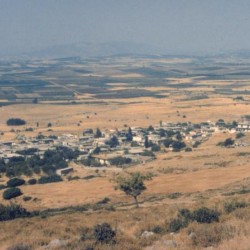 Plataea, seen from the south |
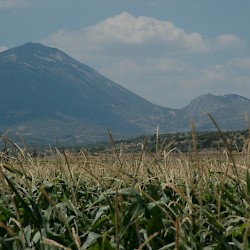 Helicon, Valley of the Muses |
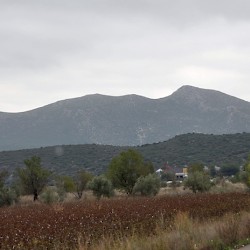 Sphingion Hill, where the mythological Sphinx lived |
Mycenaean Age
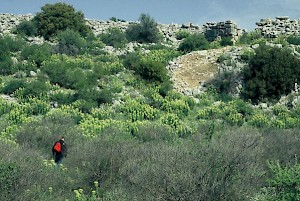
In the Late Bronze Age, there were several prosperous Mycenaean settlements, like Orchomenos, Gla, and the Cadmeia, the acropolis of Thebes. Interestingly, the Cadmeia was evacuated during the LH IIIB1 period (about 1300-1230 BCE), which is earlier than the other Mycenaean towns, which were abandoned in the LH IIIB2 (c.1230-1190) and even LH IIIC period (c.1190-1060). Perhaps this corroborates the stories of the Thebais and the Epigoni, which describe two wars between Argos and Thebes, the latter ending in the fall of Thebes, prior to the decline of the other great Mycenaean cities.
Archaic Age
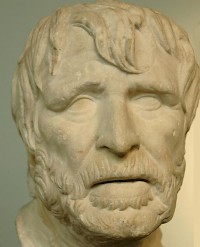
Another famous myth from Boeotia is the story of Oedipus, who is mentioned in the Iliad without further explanation: Homer’s hearers knew Oedipus. The story must have developed in the Dark Age, which came to an end in c.800 BCE. Slowly, cities were growing – Thebes, Plataea, Thespiae, Orchomenos, Ascra... – and the egalitarian rural society of Boeotia became more complex. Writing in the eighth or early seventh century, Hesiod describes how to run a farm in his Works and Days. His Theogony is an attempt to organize the pantheon of old and new, greater and lesser gods and goddesses.
The Boeotians shared the use of the Aeolic dialect of the Greek language with the Thessalians. Later generations would argue that the Boeotians had originally lived in the north and had migrated to the south. What is certain is that Boeotia was a member of the amphictyony of Anthela (near Thermopylae), which is more or less the place where the Thessalian and Boeotian spheres of interest met.
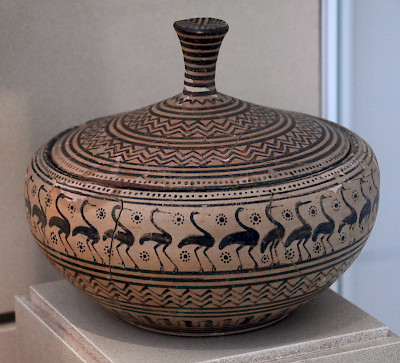
As indicated, there were several Boeotian towns. Unlike Athens, which managed to subdue all communities in Attica (which is as large as Boeotia), Thebes was never able to subdue the other towns, although it was the permanent president of a Boeotian League. Minor towns like Plataea were not above invoking foreign help if this made resistance to the centralizing policy of Thebes easier.
On the other hand, there were centralizing tendencies as well. The Boeotians shared the same coins, the same weights and measures, and most importantly: several cults, like the worship of Poseidon in Onchestus and Athena in Coroneia (the Pamboiotia).
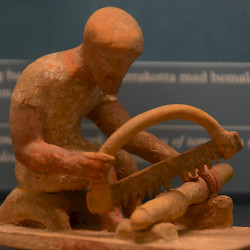 Boeotia, Figurine of a carpenter |
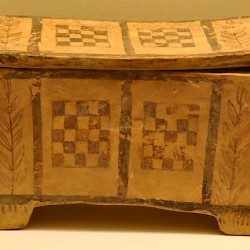 Thebes, Box |
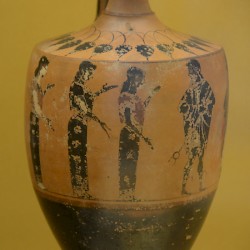 Boeotia, Vase with the judgment of Paris |
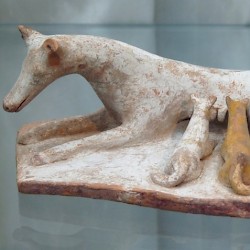 Boeotia, Figurine of a dog |
Classical Age
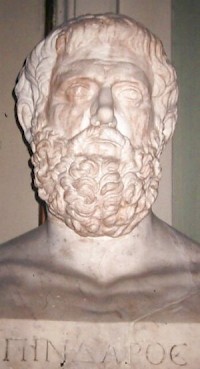
In 480 BCE, the Persians invaded Greece and after the fall of Thessaly, Boeotia was directly threatened. Writing almost half a century later, the Greek researcher Herodotus of Halicarnassus states that Thebes collaborated. Already in Antiquity, Herodotus was blamed for being biased. In an essay called The Malice of Herodotus, Plutarch of Chaeronea points at sources that say that there were many Thebans who fought bravely at Thermopylae; they were killed in action or taken prisoner. After the Persian breakthrough, Thebes surrendered: it was the wisest course and those who had been most anti-Persian were dead or lost.
The other towns in Boeotia, like Thespiae, suffered terribly and would be repopulated with other Greeks after the war. The final battle took place halfway between Plataea and Thebes; after the Greeks had defeated the invaders, they attacked Thebes. It was punished by the loss of the chairmanship of the Boeotian League, but remained an important cultural center. One of its great poets was Pindar.
Not for long, however. During the first great conflict between Sparta and Athens, the First Peloponnesian War (460-445), the Spartans restored the power of Thebes, because they believed it might be useful against Athens. On hearing about the restoration of Thebes, the Athenians invaded Boeotia and defeated their enemies at Oenophyta (457 BCE). All of Boeotia was forced to become an ally of Athens; the towns were ruled democratically. After ten years, however, the Boeotians revolted, defeated the Athenians near Coronea and restored their own order.
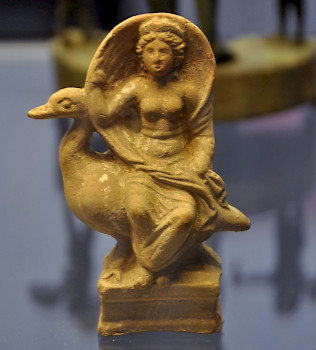
Thebes was to be the new hegemonic power. The Boeotian League consisted of eleven districts, which sent one boeotarch (“leader of the Boeotians”, in fact a kind of minister of war) and several delegates to a federal council in Thebes.note Decisions of this council had to be ratified by the oligarchies that ruled the towns.
In the Archidamian War (431-421), the Thebans tried to improve their position. The war broke out in 431 when they tried to capture Plataea, an Athenian ally. The coup failed, but after several years the Spartan allies of Plataea took the city. The Athenians tried to punish Thebes but were defeated in 424 in the battle of Delion. After the defeat of Athens in the Decelean War (413-404), Boeotia started to change its policy: in the Corinthian War (395-387), the Thebans and Athenians jointly fought against Sparta, which was defeated at Haliartus (395) and Coronea (394).
At some point, the Boeotian constitution was adapted. Thebes had always had two votes in the board of boeotarchs, but at the outbreak of the Corinthian War, the city held four positions. After all, formerly independent towns like Plataea and Erythrae had been conquered during the Archidamian and Decelean wars. When the Corinthian War ended with a Spartan victory, Sparta insisted that all Boeotian towns were to be independent again (387). Plataea was restored. When the Thebans refused to give up their power, the Spartans occupied the Cadmeia (c.383).
In 379, the Theban leader Pelopidas recaptured the Cadmeia, gave a moderate democracy to his liberated city, and restored Theban dominion of Boeotia. The Spartans tried to return but were decisively defeated at Leuctra (371). Boeotians armies, led by Epaminondas, marched to the Peloponnese and defeated the armies of Sparta, which never recovered. During the next years, Boeotia was the strongest power in Greece, but it got involved in a protracted conflict with Phocis, the Third Sacred War (356-346), which exhausted all participants. Athens, meanwhile, lost its empire in the Social War (357-355).
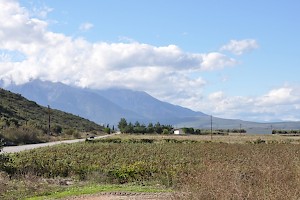
In the end, Macedonia benefited of the weakening of the Greek cities. In 338, king Philip of Macedonia defeated a united Theban-Athenian army in the Battle of Chaeronea. The Cadmeia was again occupied by a foreign army, this time Macedonian. When Philip was killed and succeeded by his son Alexander, the Thebans tried to get rid of the garrison, but Alexander sacked the city and left it uninhabited. Only the house of Pindar was spared.
The lasting legacy of Theban-controled Boeotia was dual citizenship: a man could be citizen of both his own town and a greater political unit, like Boeotia. This was to become common in the Hellenistic period.
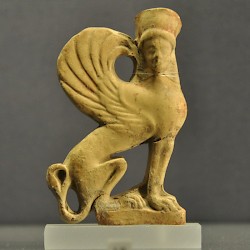 Boeotia, Statue of a sphinx |
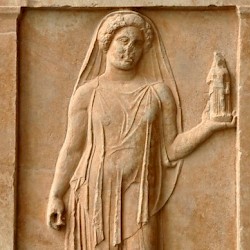 Boeotia, Tombstone of Polyxena |
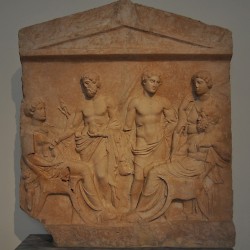 Thebes, Tombstone |
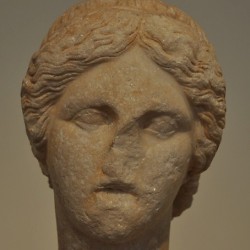 Thebes, Head of Artemis |
Hellenistic Age
Thebes was sacked and Boeotia would never really recover, even though one of Alexander’s successors, Cassander, allowed the Thebans to return and rebuild their city (316). For a short while, the Boeotians joined the Achaean League, switching to the Aetolian League in 245 and to an alliance with Macedonia in 236.
This last move proved disastrous: it brought Boeotia into the frontline of several wars, first between Macedonia and the Roman Republic, later between the Roman Republic and Mithridates VI of Pontus. In 197 BCE, the Roman general Flamininus occupied Boeotia , and ever since, the Thebans and various other towns in Boeotia supported about every anti-Roman politician: Antiochus III the Great, Perseus, the Achaeans, and Mithridates VI of Pontus. Every time, armies moved through Boeotia.
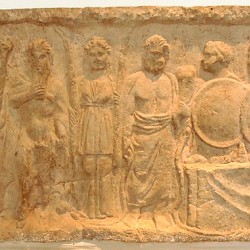 Lebadeia, Relief of Trophonius |
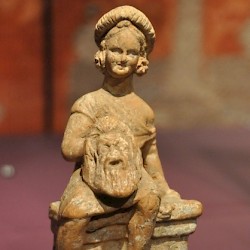 Thebes, Figurine of a young actor |
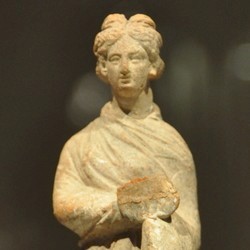 Boeotia, Figurine of a lady |
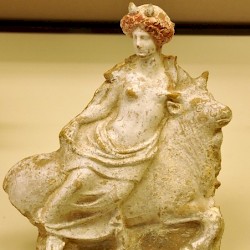 Thebes, Figurine of Europa |
Roman Age
Writing at the beginning of the common era, the geographer Strabo noted that Thebes' Cadmeia was, "not even a remarkable village".note Still, the Roman age brought prosperity. The Boeotian League, which had been dissolved in 146 BCE, was founded again, although its functions were now merely religious. Thebes, slowly growing to become a provincial town, received the emperor Hadrian in 125 CE. He must have met Plutarch, the philosopher of Chaeronea.
The invasions of the tribes of the Lower Danube, which took place in the third century CE, were violent and destructive. At the beginning of the fifth century, Thebes' walls were rebuilt to protect the town against the armies of Alaric, the king of the Visigoths.note By then, Boeotia had become Christian. In 431 a bishop Anysius of Thebes attended the Council of Ephesus. A terrible earthquake in 551 destroyed eight citiesnote and marks the end of urban life in Boeotia.
